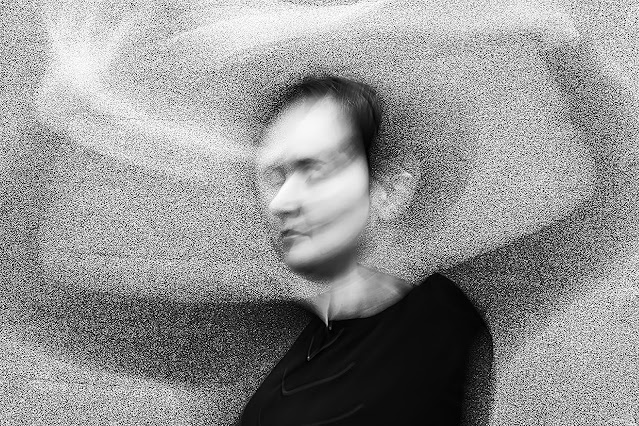A Year in Beauty Demands
At this time of year, magazines urge us to dress in “perfect
party dresses to hit the dance floor in” (Marie Claire), and to buy “Christmas
makeup sets ALL beauty lovers will want” (Cosmopolitan), not forgetting “the best
fake tans for surviving the winter washout” (Glamour).
It all sounds somewhat exhausting!
Why not instead look back at our blog and see what our contributors have said and
done about beauty in 2018?
We began the year, appropriately, with Heather
Widdows musing on how New Year’s resolutions had changed over time
to focus on appearance rather than character improvement, and the potential
harms of this; an idea also explored by Ajmal
Mubarik. Throughout 2018, various other themes have emerged:
- Social Media
As a primarily visual environment, social media is
impossible to ignore in relation to appearance. Knowing that social media
images are idealised does not make us less susceptible to their effect,
according to Jasmine
Fardouly. However, the impact is not clear-cut with Victoria
Goodyear showing that young people are both critical and vulnerable
social media users, and Sarah
Grogan & Jenny Cole looking at whether selfies are constraining
or empowering.
- Diversity and acceptance
Movements aimed at increasing acceptance of
appearance-related differences have been coming more and more to the fore, but
not without critique. Maisie
Gibson and Ajmal
Murabik both discussed how body ‘positivity’ campaigns still push
compliance with a standard appearance. On a similar line, Ruth
Page explored how so-called ‘ugly selfies’ may reinforce rather than
resist beauty ideals. Considering cultural portrayals of difference, James
Partridge called for an end to the use of facial ‘imperfections’ as
a lazy shorthand for villainy (a campaign recently backed by the British Film Institute).
- Race, Colour, and Beauty
An aspect of diversity that necessitates close attention is
that of skin colour, and the stigmatisation of darker skinned individuals. This
can lead to an internalised bias, identified by Ronald
E. Hall as the “Bleaching Syndrome”.
Aisha
Phoenix sees writing about this issue of colourism as essential for
social justice, however challenging it may be. Likewise, Shirley
Tate describes receiving race hate for talking about this topic, and
suggests why love of dark skin is politically crucial.
- Risk Factors
Our feelings about our bodies can be negatively affected by
many things. Jasmine
Fardouly reports that how mothers talk about their own bodies can influence
their daughters’ body image. Peers too play a role, with Kirsty
Lee finding that bullying by others increases body dissatisfaction. Low satisfaction with our body parts can have
knock-on effects, e.g. Viren
Swami discusses how women who are dissatisfied with their breasts engage in
less breast self-examination. However, body image may not be as negatively
affected as expected, as Sarah
Grogan & Jayne Mechan show in their work with women following breast
cancer treatment.
- Legal Concerns
Where beauty practices carry the potential for physical
harm, how much legal consideration is given? Not enough for non-therapeutic
cosmetic surgery according to Alexandra
Mullock, who proposes using criminal law for better protection from
rogue surgeons. Nor is there enough regulation around the use of commercial
sun-beds in the opinion of Melanie
Latham & Jean McHale, who make a case for a complete ban.
- Beauty Pressures and Practices
The increasing demands of beauty are received and
interpreted in myriad ways. Shannon
Oates & Em Walsh consider the dominance of the demand on women for
youth as beauty. The appearance pressure (and discomfort) felt by researching beauty
vloggers is explored by Sophie
Bishop, while Anna
Westin phenomenologically analyses the force of advertising images. Pressure
to engage in beauty practices, and the ambivalent feelings these generate, are key
to Agomoni
Ganguli-Mitra’s story of hair and beauty ideals, and equally to Clare
Chambers’s narrative on using make-up to “blend in or stand out”.
- Publications and Presentations
At the Birmingham
Museum and Art Gallery, volunteers from the public collaborated with
staff on an exhibition on Body Image (still on until Feb 2019). In the spring
of 2018, network member Carolyn
Mair published her book on “The Psychology of Fashion”; a fascinating
investigation of the reciprocal relationships and influences between fashion
and human behaviour. And last, but by no means least, in June one of Beauty
Demands’ leads, Heather
Widdows published her book “Perfect Me”, presenting an original and
rich exploration of the beauty ideal as an ethical ideal.
We’ve thoroughly enjoyed all the blog posts this year, so
huge thanks to our contributors. Here’s to more brilliant discussions and
debates about beauty demands in 2019!



Wonderful post! Consult a licensed doctor for more advice on how to take care of your skin and hair, click for more Laser Hair Removal in East Delhi
ReplyDeleteThis comment has been removed by the author.
ReplyDelete